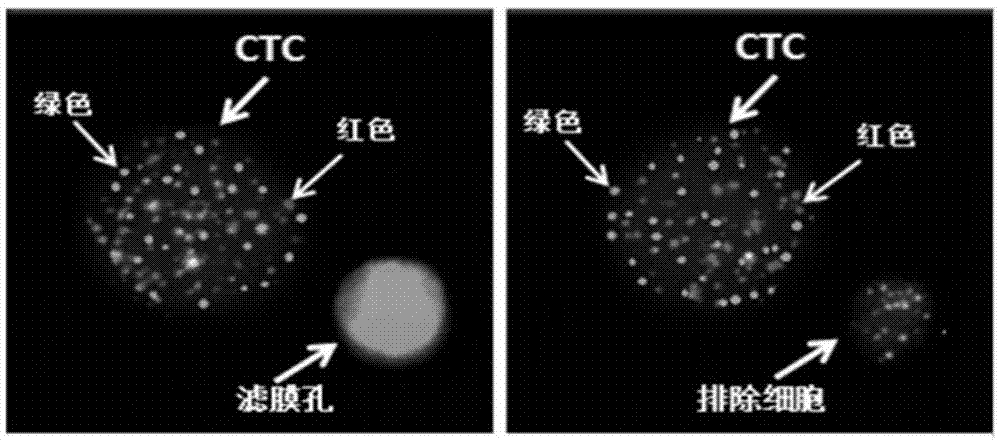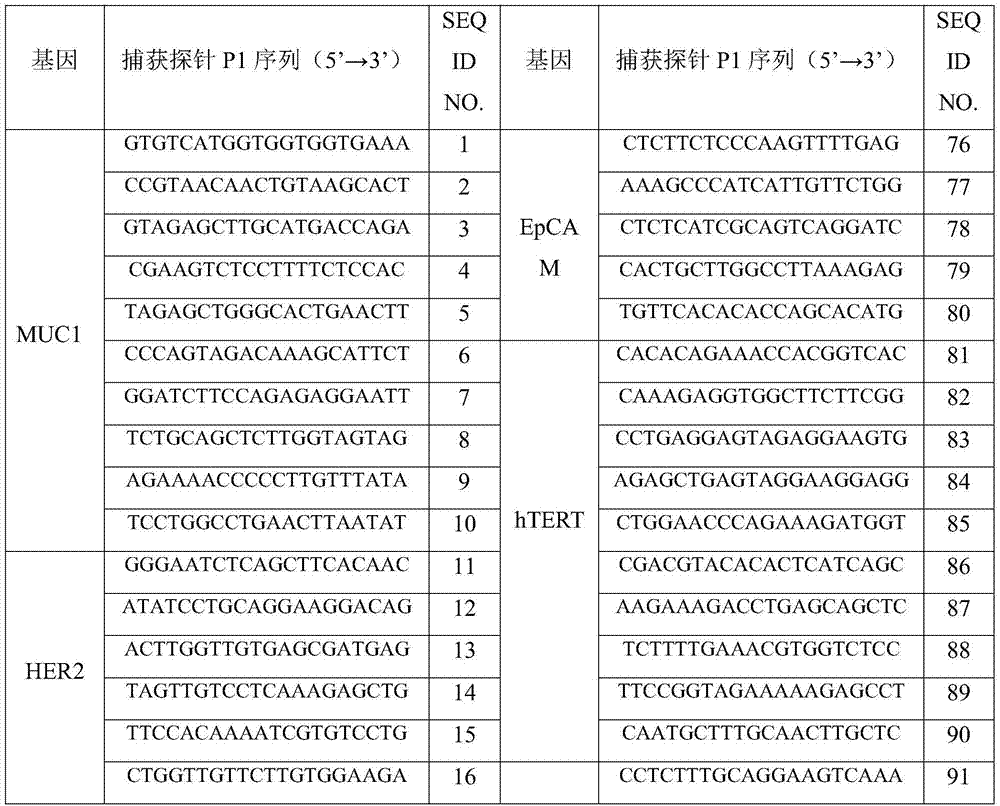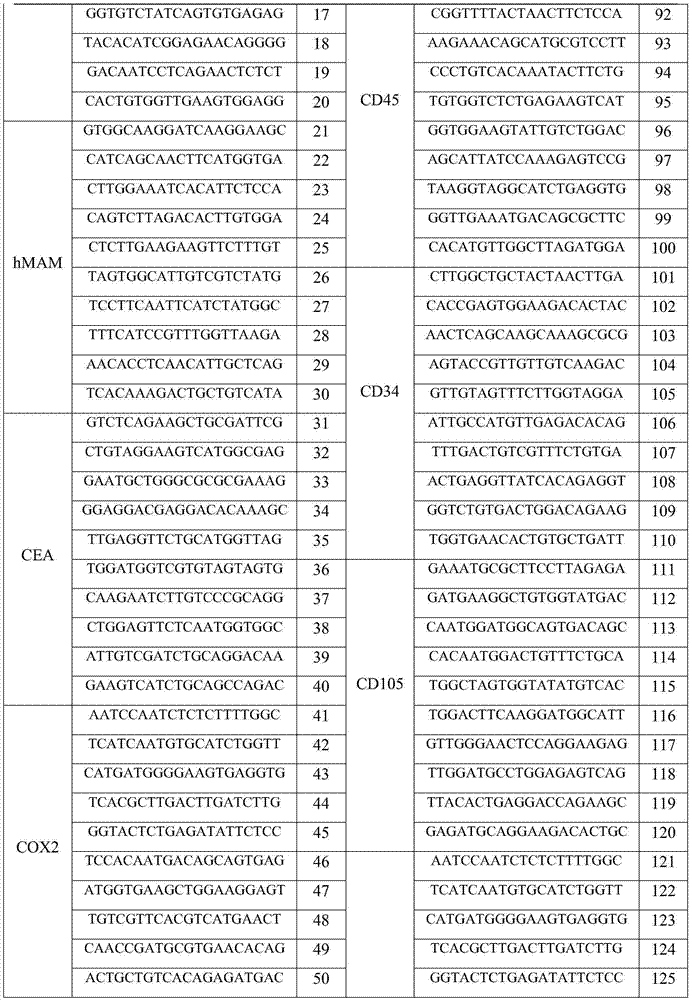Breast cancer early diagnostic kit
A technology for early diagnosis and breast cancer, applied in the field of molecular biology, can solve the problems of lack of specific early diagnosis molecular markers, limited early diagnosis of breast cancer, low signal sensitivity, etc., to improve the cure rate and survival rate, avoid false Negative and false positive results, the effect of improving specificity and accuracy
- Summary
- Abstract
- Description
- Claims
- Application Information
AI Technical Summary
Problems solved by technology
Method used
Image
Examples
Embodiment 1
[0024] There are two types of breast cancer early diagnosis kits described in this example, with labeled probes and without labeled probes.
[0025] Wherein, breast cancer early diagnosis kit A with labeled probe mainly includes:
[0026] 1. Capture probe
[0027] The capture probe is composed of three parts, the 5' end to the 3' end are the P1 sequence that is complementary to the mRNA of the corresponding target gene, the spacer sequence, and the P2 sequence that is complementary to the corresponding amplification probe P3 sequence. The P2 sequences in the capture probes of the target genes of the same category are the same. The spacer is used to space the capture probe P2 sequence from the target mRNA, and by setting a spacer sequence of appropriate length inside the probe, it can reduce steric hindrance, improve the efficiency of the hybridization reaction and the specificity of the hybridization reaction . The spacer arm of the capture probe of the present invention is...
Embodiment 2
[0047] Example 2 Using kit A in Example 1 to detect circulating tumor cells in peripheral blood of breast cancer patients
[0048] The formula of described various solutions is as follows:
[0049]
[0050]
[0051] The probe mixture, amplification mixture, and chromogenic mixture in this example all use all the probes in the corresponding gene list of the Breast Cancer Early Diagnosis Kit A with labeled probes in Example 1.
[0052] 1. Sample pretreatment, filtering breast cancer CTCs onto the filter membrane
[0053] 1. Preserve the blood sample in the sample preservation tube with preservation solution, centrifuge at 600×g for 5 minutes, discard the supernatant, and remove the red blood cells.
[0054] 2. Add 4mL PBS and 1mL fixative, vortex to mix, and let stand at room temperature for 8min.
[0055] 3. Sample filtration: transfer the liquid in the sample storage tube to the filter, turn on the vacuum filtration pump to drain the liquid; add 4mL PBS to the storage ...
Embodiment 3
[0105] The selection of embodiment 3 target detection gene quantity and kind
[0106] 1. Design of kit preparation (selection of the number and types of target detection genes)
[0107] The breast cancer screening gene of the kit of the present invention is selected from: MUC1, HER2, hMAM, CEA, COX2, and the corresponding selection is made according to the experimental group. The breast cancer CTC marker gene uses: CK19, SERPINE1, EpCAM and hTERT; the exclusion gene uses: CD45 , CD34, CD105, CD144, CD146 and VWF.
[0108] For the selection of breast cancer screening genes, see Experimental Group 1-4, select one, two, three and five target genes respectively, and compare their detection effects, while breast cancer CTC marker genes and exclusion genes use all target genes , the specific design is shown in Table 7.
[0109] The compositions and quantities of the capture probes, amplification probes and labeling probes, detection methods, etc. of each group of corresponding tar...
PUM
| Property | Measurement | Unit |
|---|---|---|
| Membrane pore size | aaaaa | aaaaa |
Abstract
Description
Claims
Application Information
 Login to View More
Login to View More - R&D
- Intellectual Property
- Life Sciences
- Materials
- Tech Scout
- Unparalleled Data Quality
- Higher Quality Content
- 60% Fewer Hallucinations
Browse by: Latest US Patents, China's latest patents, Technical Efficacy Thesaurus, Application Domain, Technology Topic, Popular Technical Reports.
© 2025 PatSnap. All rights reserved.Legal|Privacy policy|Modern Slavery Act Transparency Statement|Sitemap|About US| Contact US: help@patsnap.com



